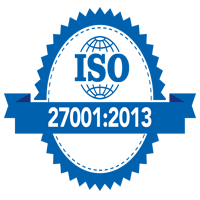Both staff augmentation and managed services involve engaging external resources and are outsourcing models. However, it’s important to note that both services are different at their core and cannot be used in place of each other.
In this blog, we will figure out how the staff augmentation model is different from that of managed services and what factors to consider while choosing the ideal service as per your business goal and objectives. It’s significant for the companies to understand both terms first to opt for a suitable model for them.
What is Staff Augmentation?
To overcome roadblocks and meet the project’s tight deadlines, or if you are deprived of specific expertise, then companies usually augment or expand their team with temporary resources. One can hire onshore and offshore talent to accelerate the project delivery cycle by having access to varied skillsets of individuals.
Let’s understand the term staff augmentation better-
- Staff augmentation solutions help companies reduce hiring costs involved in hiring full-time employees
- Access to top talent as per the requirement and filing the expertise gap
- Meeting project deadlines on time by hiring the right staff at the right time, ideal for time-sensitive projects
- The hiring company has a high level of control over the temporarily hired staff and the project
What are managed services?
Managed services are another outsourcing model, in which a client company entrusts certain functions and processes to a third-party provider, referred to as a managed service provider. A managed service provider can offer services related to network, infrastructure, security, or another function as per the needs of the client company. The model is result-oriented compared to only offering just resources. In contrast with staff augmentation, the day-to-day operations are taken care of by the managed service provider.
Let’s understand the term Managed Services better-
- Eliminate training and recruitment costs, as the managed service provider is fully independent and takes full responsibility for the execution.
- Managed services are primarily used to save clients’ time. Having expertise, the provider can relieve clients’ company and let them focus on complex tasks.
- Facilitate great project management as the service provider has the required tools and technologies to ensure an effective development process and offers assured outcomes
While both the outsourcing models have their own benefits, the client company can analyze the benefits and risks associated to land on conclusion. One must consider the listed factors for a more confident decision among the both-
Cost Consideration
For a better choice between both models, need to analyze the cost implications of each. With staff augmentation, the client only pays for the supplement staff that works for your organization, it can be hourly or monthly payouts. On the other hand, managed service requires fixed and steady investment based on the scope of services offered.
The choice between the two is based on the budget constraints and the requirements.
Resource Flexibility
With staff augmentation, clients can scale up and down the size of the team and can expand their in-house team as per the requirement, thus facilitating a great degree of flexibility. On the other hand, managed service includes offering a wide range of services and resources that involve signing a fixed service level agreement.
Thus, while deciding between the two, one must consider the project’s expected workload fluctuations and the duration of the resources required for the project.
Level of control
Smart staffing solutions like staff augmentation, clients have great control over the project as well as on the resources. The client decides the task priorities, workflow, and processes for the augmented staff members. With managed services, the level of control is typically low as the routine tasks and project execution are primarily handled by the managed service provider, resulting in comparatively less direct control over workflow.
The decision between the two should be based on parameters including preference for delegating the control, and complexity of the project among some.
Project Duration
Staff augmentation can work for short-term and fluctuating needs as resources can be onboarded and released as per the needs of the project. Managed service usually involves long-term commitments as outlined in the service agreement as it involves outsourcing entire projects. Going with managed services can help save costs over a longer time.
Deciding between the two models, the managed services model vs staff augmentation should be based on clients’ expected project duration, project complexity, and resource availability.
Security Measures
With staff augmentation, the client can enforce its own security protocols, ensuring that the augmented team should follow them and its client’s responsibility to ensure that members comply with security protocols. With managed services, you need to share sensitive information with third parties, thus clients should conduct due diligence to ensure that the service provider meets the specific security compliances.
The decision to opt for the best model depends on the client’s requirements, third-party risk management, and vulnerability assessment.
Final Words
Both models are considered great supporting models to help companies complete projects on time. Knowing the difference between the two is a must to consider the suitable engagement model to get the most out of the opted one. Additionally, the choice also depends on what aligns well with your business’s goals and objectives. Staff augmentation is a great choice when you have a small duration project and need specific resources whereas managed services are better for long-term projects and used to save the client’s time.
At Canopus Infosystems, you can rely on us for your staffing needs whether you require remote, on-site, or hybrid staff, project-based, or a complete team for your specific project. Count on our experienced professionals to get high-quality services that exceed your expectations.
4 mins read

















